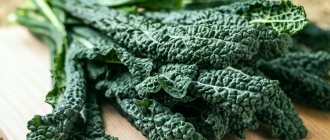Experts say that every 50 grams of sausage and other processed meat products consumed daily increases the risk of developing colorectal cancer by 18%. In other words, scientists do not even consider the question of why sausage is useful - but remind us of its dangers.
The World Health Organization recommends completely eliminating ham, sausages and sausages from the diet - limiting the total consumption of red meat (in the form of tenderloin or minced meat) to 350 g per week. What exactly is the harm of these products to the body?
Myth one. "Soy" and "paper"
The myth that instead of meat they put soy or even cellulose in sausages was dispelled by Roskachestvo’s testing of Molochny sausages from 40 manufacturers. Soy was found in only three samples, and there was no cellulose at all.
“To make sure of this, you need to read the composition on the label,” adds Irina Borisova, chief technologist of the company (which, according to Roskachestvo, as well as according to the ROMIR study, has one of the best “Milk” sausages). “The main ingredient will be listed first, that is, the one that the product contains the most, because all ingredients on the label are indicated according to the principle: from most to least.”
Question answer
Do I need to remove the film from sausages before cooking? By the way, according to Irina, it is important for the manufacturer to include the composition of the product on the label, because some ingredients (mainly spices) may be allergens. People suffering from allergies should see this and choose products that are safe for themselves.
Are sausages harmful to health?
The harm of sausages to human health is obvious. After all, the product contains very few useful ingredients. First of all, you need to take into account that the dish has a high calorie content. There are about 380-400 kcal per 100 g. Regular consumption of this product has a negative impact on your figure. For overweight people this is very critical.
Sausages are harmful to health because they contain genetically modified components, dyes and preservatives. These substances can accumulate in the body, causing further malignant tumors. The most dangerous preservative is sodium nitrite. It is necessary to give the semi-finished product a characteristic color. With constant use, the preservative stimulates the development of serious diseases of the digestive system.
Chemicals are addictive, reducing the ability to enjoy natural foods. This effect is achieved due to an artificial increase in serotonin in the blood. In some cases, sausages act as an allergen. They are especially harmful to give to young children.
Vegetable fats present in sausages are carefully processed. As a result, they are transformed into trans fats, which cause significant harm to health. High salt content negatively affects the functioning of the urinary system. Excessive consumption of the product may cause swelling and discomfort in the lumbar region.
The main harm of sausages is the increase in bad cholesterol in the blood.
Myth two. Expensive ones are the same quality as cheap ones
Any housewife can doubt this - from her own experience. And here is the reasoned opinion of a professional - R&D technologist of the company Elena Klochkova :
“The price of sausages must be correlated with the price of meat - their main ingredient. If meat now costs an average of 300 rubles. per kilogram, then high-quality sausages cannot cost 100 rubles.” A pack of sausages weighing 500 g contains approximately 350 g of meat, and this is no less than 200-250 rubles per kilo of the finished product. So think several times whether to buy sausages for 100 rubles per kilogram.
Do sausages contain meat?
The “Milk” sausages were examined under a microscope. A massive inspection was carried out by experts from the Roskachestvo system. They purchased sausages from the most famous and popular brands. According to the results of laboratory tests, only every second sausage on the market does not have any violations or is a high-quality product, says Boris Chesnokov, correspondent for the MIR 24 TV channel.
Experts found out what, in addition to meat, the manufacturer put in milk sausages. Roskachestvo conducted a test purchase of 30 of the most popular sausage brands among Russians. Independent experts checked them according to 70 parameters.
First, the good news. No harmful bacteria, heavy metals, or radioactive contamination were found in any of the samples. All tested sausages are made primarily from meat. True, in addition to pork and beef, every fifth manufacturer added chicken, which contradicts the current GOST. Soy was detected in two cases. Antibiotics were found in 13 samples, and in three their doses exceeded the permissible limits. A number of meat processing plants added chopped skin, fragments of bones and cartilage, starch and carrageenan to sausages instead of meat. This food additive, sometimes hidden under the brand name E 407, can often raise doubts among a sophisticated consumer.
“This additive stabilizes raw materials, it has moisture-retaining properties, so it can add a little mass, and it also helps technologists hide the shortcomings of raw materials,” notes Roskachestvo spokeswoman Marta Galicheva.
Almost every tested specimen contained the additive E250 – sodium nitrite. It is this chemical element that gives sausages their characteristic pink color. In small quantities it is absolutely harmless to health.
When purchasing dairy sausages, experts advise reading the label carefully. They must indicate GOST and composition. However, as it turned out, many manufacturers simply misinform the consumer.
“The consumer is disoriented. Unfortunately, the labeling is deceiving. Sometimes the presence of starch, carrageenan or poultry is not indicated. The consumer needs to read the label very carefully,” says the Roskachestvo press secretary.
One of the objective guidelines remains price. If you prepare milk sausages according to the traditional recipe from pork, beef, milk and eggs, then the cost of raw materials alone will cost at least 210 rubles per kilogram. If you add other costs, the price will at least double.
“The retail price of quality products, taking into account the real cost of meat, if we talk about meat products in which the share of meat is at least 40-60%, will be from 450-500 rubles per kilogram,” says Dmitry Chumakov, general director of the Agency for Marketing and Sociological Research.
However, there are also good sausages on the market. In any case, according to the results of the study, five manufacturers claim to be a high-quality product. These are “Dymov”, “Pit-Product”, “Borodin’s Meat House 1997”, “Mikoyan” and “Family Sausages”. They will be given a quality mark if additional checks are successfully completed.
Meat dishes every day
Eat and not go broke
Milk sausages are one of the so-called Soviet brands. The production technology was purchased in the USA in 1936. They were made from pork with the addition of a small amount of beef, milk and chicken eggs. The sausages were so good and tasty that they didn't require much spice: no garlic, no pepper, just a little natural cinnamon for flavor. In the Soviet Union, milk sausages were of the highest quality and were used in dietary nutrition and were recommended for children.
And today almost every resident of the CIS countries is familiar with this name. But Soviet production standards have long been forgotten.
The cheapest milk sausages can be bought in Kazakhstan - for a dollar and 80 cents. It is difficult to guess what they are made from. On average, prices start at four dollars per kilogram. The maximum price in Moldova is $8.
In Russia, the cheapest milk sausages cost about 2.5 dollars, the most expensive - 11. True, we are talking about industrial production. A lot of individual farm products have appeared on the market. Such sausages can cost 1,300 rubles per kilogram. The manufacturer assures that not only do they contain no harmful chemicals, but they are also made with love.
Read us on Telegram.
Myth four. Quality depends on the shell
As you know, sausages are produced in natural casings, cellophane and polyamide. Some people think that higher quality contents are placed in a natural shell, while others prefer cellophane, which is easily removed.
Question answer
Should sausages be boiled before frying?
“The content is absolutely the same,” assures leading specialist of the quality control department Natalya Marshalkina .
“But the natural casing reveals the taste differently, so many people choose products in it. In addition, after cooking sausages in such a casing, when you bite into it, a characteristic crunch appears, which many people like. That, in fact, is the whole difference from sausages in cellophane.” But sausages in a polyamide casing have another significant feature. The fact is that sausages are subjected to short-term natural smoking. It has a bactericidal effect on the product and at the same time improves its organoleptic properties. This gives the sausages a golden color and a slightly thickened, beautiful crust on the surface. But the polyamide casing does not allow smoke to pass through, so products that have not been smoked are sold in such a casing. They differ in color, which remains a natural soft pink and does not contain a hint of smoke - especially for those who do not like it.
What are the benefits of sausages?
The first thing that comes to mind is their very small nutritional value. That is, calorie content. This means that this product allows you to quickly satisfy your hunger and replenish the loss of energy after physical training or hard work. But this only applies to expensive, high-quality products. Cheap sausages will do more harm.
There is no doubt that a good product will have a significant impact on your pocket. But if you regularly eat food of questionable quality, you will then have to spend much more on medicine. But high-quality sausages will bring great benefits to the body:
- For the cardiovascular system. Potassium and magnesium in the composition strengthen the heart muscle and maintain the elasticity of blood vessels.
- For the brain and nervous system. B vitamins allow all groups of nerves in the body to function normally, improve the proper functioning of the brain and memory.
- For the thyroid gland. The iodine contained in the composition helps to improve the functioning of the endocrine system and helps to avoid thyroid diseases.
- For joints and bones. Phosphorus and calcium help maintain proper functioning of the musculoskeletal system.
- For the skin and the whole body. Sausages contain a considerable amount of vitamin E. It is recognized as a powerful antioxidant that helps the body quickly get rid of free radicals and heavy metal salts. This allows you not to age longer and look younger than your age in appearance.
- For the circulatory system. Iron promotes the proper functioning of the hematopoietic organs, which helps to avoid anemia. Plus maintaining normal hemoglobin levels.
- For growth and development. Vital amino acids are involved in the functioning of all body tissues.
These are the beloved sausages. All the points written above also apply to homemade products. Of course, despite the abundance and variety of recipes, homemade sausages are not even remotely similar to factory-made sausages. They do not have the required consistency, smell or color. However, these are real sausages. In addition, they are much tastier and healthier than store-bought ones.
But sausages mass-produced by giant meat factories do not have even a tenth of the described advantages.
the benefits and harms of dumplings
Myth fifth. GOST is a guarantee. TU - fraud
For those who believe that products manufactured according to Technical Specifications (TU), and not according to GOST, cannot be of high quality, Dymov specialists cite as an example the results of the international competition for products of food industry enterprises “Quality Guarantee”. This year the company received a gold medal for its “Smoked Turkey,” which is manufactured according to specifications.
“The products according to the specifications are original,” says Irina Borisova. Technical conditions give the manufacturer, on the one hand, the opportunity to be creative. On the other hand, they allow us to produce certain products to suit the tastes of different groups of customers: some, for example, like it saltier, others prefer sweeter tastes.”
What to cook with sausages: 5 interesting dishes Read more











